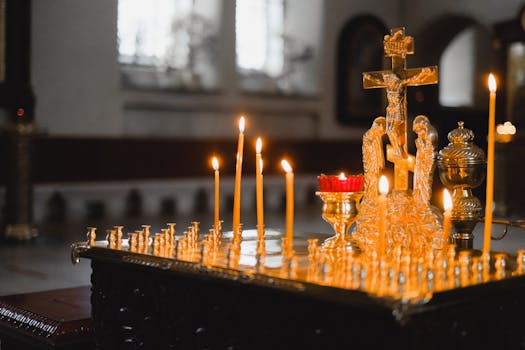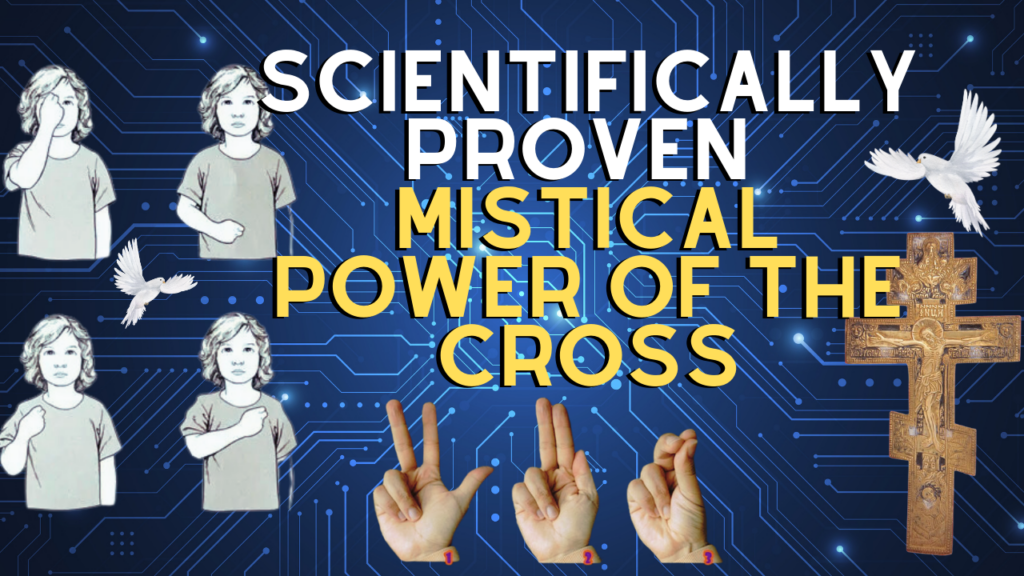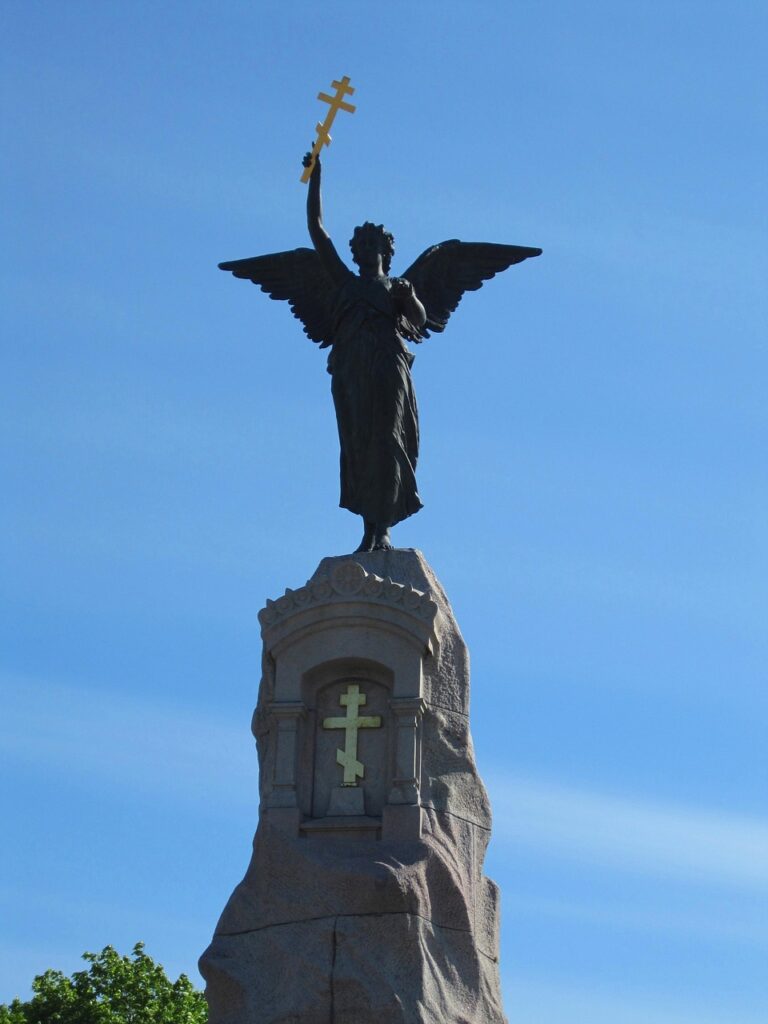If you’ve ever observed Orthodox Christians frequently making the sign of the cross, you might wonder about the deeper meaning behind this sacred act. More than just a habitual motion, this gesture is a profound declaration of faith, a personal prayer, and a protective invocation. It serves as both an outward expression of belief and a reminder of God’s presence in daily life. In this in-depth exploration, we will uncover the origins, significance, and theological weight of this revered practice, along with its role in Orthodox Christian life today.
A Tradition Rooted in Early Christianity
The sign of the cross is an ancient Christian tradition that dates back to the earliest followers of Christ. The apostles, who bore witness to Jesus’ crucifixion, are believed to have passed down this practice as a means of honoring and remembering His sacrifice. References to this act appear in early Christian writings, with Tertullian, a Christian theologian from the second century, noting that believers frequently marked themselves with the sign of the cross as a silent declaration of their faith.
In its earliest form, this act was quite simple. Early Christians would trace a small cross upon their forehead or in the air, signifying their allegiance to Christ. As Christianity spread and faced persecution, the sign evolved into a more defined and recognizable gesture, becoming a visible marker that distinguished Christians from others in the Roman Empire.
By the fourth century, Emperor Constantine the Great embraced Christianity and recognized the power of the cross. He famously ordered it to be inscribed on the armor of his soldiers, believing it would offer divine protection. This further solidified the cross as a crucial emblem of Christian identity and strengthened the tradition of making the sign in both private devotion and public worship.
As Orthodox Christianity developed its distinct liturgical practices, the sign of the cross became a central expression of faith, shaping the way believers engaged in prayer and spiritual life.

The Deep Symbolism Behind the Gesture
The sign of the cross carries immense theological significance. It is not just a motion but a statement of belief that embodies the core tenets of Christianity. The cross itself is central to Christian doctrine, representing Jesus Christ’s ultimate sacrifice and His victory over sin and death. By making the sign of the cross, Orthodox Christians physically affirm their connection to Christ’s suffering, resurrection, and the promise of eternal life.
The gesture is performed in a specific sequence: touching the forehead, then the chest, followed by the right shoulder and finally the left. This movement holds profound meaning:
Forehead – Acknowledging God the Father, the Creator of all things
Chest – Honoring God the Son, Jesus Christ, who became human and sacrificed Himself for our salvation
Right shoulder – Recognizing His strength, justice, and power
Left shoulder – Embracing His mercy, compassion, and boundless love
Additionally, the sign of the cross is considered a protective act. Many Orthodox Christians use it as a means of warding off evil, seeking divine guidance, and reinforcing their faith in God’s presence during difficult times. It is a spiritual armor, a silent yet powerful prayer for strength and courage.
Bowing while making the sign of the cross is also common in Orthodox worship, signifying humility and deep reverence toward God. This small but significant physical gesture reminds believers of their place before the divine and their commitment to following Christ’s teachings.

The Orthodox Way: How the Sign is Made
Orthodox Christians make the sign of the cross in a distinctive manner that holds theological significance. The positioning of the fingers is especially meaningful:
The thumb, index, and middle fingers are pressed together, symbolizing the unity of the Holy Trinity (Father, Son, and Holy Spirit).
The ring and little fingers are folded into the palm, representing the dual nature of Christ—fully divine and fully human.
This configuration teaches a profound theological truth without the need for words, allowing every Orthodox Christian to reinforce their faith through a simple yet powerful motion.
The sequence of movement also differs from Western Christian traditions:
Head to chest – Affirming commitment to God
Right to left shoulder – Differing from the Western Christian practice of left to right, emphasizing the Orthodox path
While this practice is largely uniform among Orthodox Christians, cultural variations exist. Some believers conclude the sign with a bow, while others kiss a cross pendant worn around their neck, adding further reverence to the act.
The Holy Trinity in Every Sign
One of the most essential aspects of the sign of the cross is its connection to the Holy Trinity. Orthodox Christianity firmly upholds the doctrine of the Trinity—Father, Son, and Holy Spirit—as the foundation of faith. Each time a believer makes the sign of the cross, they are reinforcing this central tenet of Christianity.
Forehead – Honoring God the Father, the divine Creator
Chest – Acknowledging Jesus Christ, the Son, who became incarnate for humanity’s salvation
Shoulders – Recognizing the Holy Spirit, the sanctifier and sustainer of faith
This act is not only a personal moment of devotion but also a powerful catechetical tool, reinforcing the unity and co-eternality of the Trinity with every repetition. It serves as a reminder of God’s omnipresence and the believer’s relationship with the divine.
A Gesture of Protection and Blessing
Throughout Christian history, the sign of the cross has been used as a means of seeking protection and divine blessing. Orthodox Christians make the sign to invoke God’s grace in all aspects of life—before prayer, upon entering a church, during moments of danger, or even before beginning daily tasks. It is believed to act as a spiritual safeguard, shielding believers from evil influences and affirming their trust in God’s providence.
Moreover, the sign is often made over others as an intercessory act, asking for God’s blessing on loved ones. This reinforces the communal aspect of Orthodox faith, where believers share spiritual strength and seek grace not only for themselves but for the entire Church body.
Incorporating the sign of the cross into everyday life transforms ordinary moments into opportunities for worship, reminding believers of God’s constant presence and guidance.
Final Thoughts
The sign of the cross is far more than a simple gesture—it is a deeply significant expression of faith, a prayer for protection, and a reinforcement of Orthodox Christian doctrine. As a timeless tradition that unites believers across generations and cultures, this sacred act continues to shape spiritual life in profound ways.
Each time an Orthodox Christian makes the sign of the cross, they reaffirm their faith in the Holy Trinity, seek God’s blessings, and proclaim their commitment to Christ’s teachings. Whether performed during worship, in private devotion, or as a daily act of faith, this powerful tradition remains a cornerstone of Orthodox Christianity, strengthening the believer’s spiritual journey and deepening their connection to the divine.

